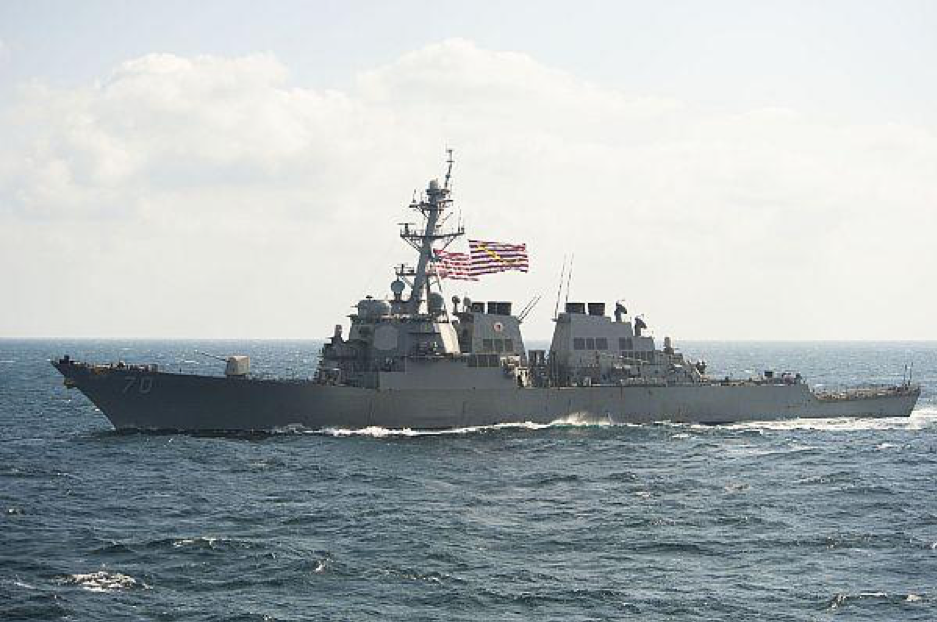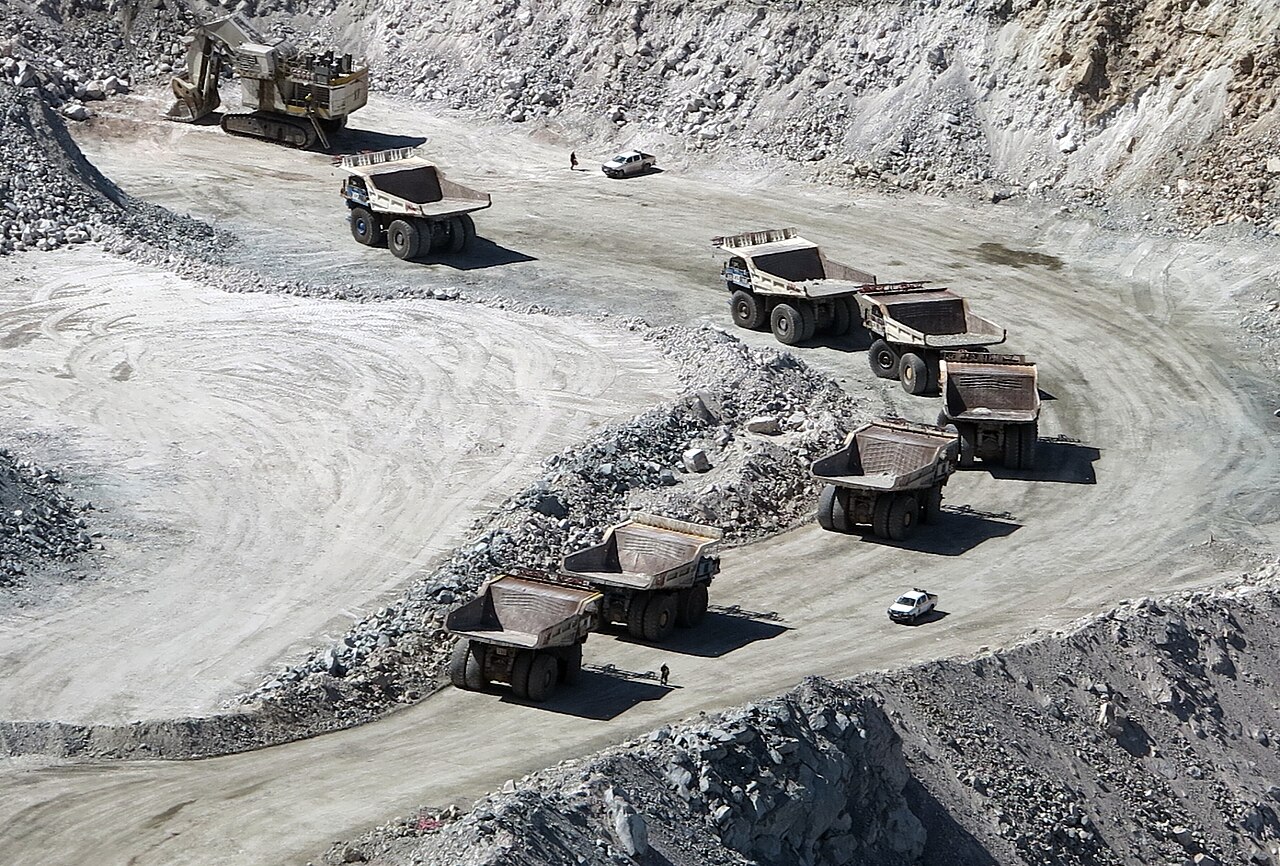Water Wars: U.S. FONOP Continues to Ripple Through South China Sea Dispute
The United States drew significant criticism from China for its latest freedom of navigation operation (FONOP) in the South China Sea.

Published by The Lawfare Institute
in Cooperation With

The United States drew significant criticism from China for its latest freedom of navigation operation (FONOP) in the South China Sea. In the days following the USS Hopper’s transit through the 12-nautical-mile zone around the Scarborough Shoal, editorials in China’s People’s Daily warned that the action was “reckless” and that “China must strengthen and speed up the building of its abilities” in the islands. The Global Times, another state-owned paper, noted that as China’s power grows, it is better able “to send more naval vessels as a response and can take steps like militarizing islands.” China’s actions have matched its words. It recently deployed advanced Su-35 and J-20 fighter aircraft to patrol the South China Sea and is upgrading the civil communications infrastructure on the islands it occupies. The Philippines-based Inquirer recently released a cache of new high resolution photos taken in late 2017 detailing the rapid addition of military infrastructure.
A U.S. official described the Hopper’s action as “innocent passage” rather than a FONOP, though “the message was the same.” Under the United Nations Convention on the Law of the Sea Articles 17–19, all nations have the right of “innocent passage” to continuously and expeditiously traverse other nations’ territorial seas. Though both China and the Philippines claim the Shoals, this reference to the Hopper’s activity as innocent passage seemed to implicitly accede that the shoals are entitled to a territorial sea: Warships need only declare innocent passage to traverse territorial seas, as opposed to the high seas. In the 2016 South China Sea arbitration, the International Tribunal for the Law of the Sea ruled that the shoals were not an island but a rock and therefore does not create a territorial sea or other maritime zones on its own.
The Philippines may be making it more difficult for other nations to protect freedom of navigation in the South China Sea by minimizing their claims to Scarborough Shoal and other features. The Philippine government has appeared to largely ignore China’s reclamation and militarization efforts during recent meetings: The two countries recently pledged cooperation on joint exploration for oil and gas in the region without touching on construction work or sovereignty in the South China Sea. However, the Philippine military recently deployed a TC-90 turboprop aircraft, donated by Japan, to monitor its exclusive economic zone and protect its maritime domain in the South China Sea.
Other major maritime powers have supported the United States’ position on freedom of navigation. In March, Britain plans to send a Royal Navy Type 23 frigate, the HMS Sutherland, on a transit through the South China Sea. Speaking on a recent trip to Australia, British Defense Secretary Gavin Williamson noted that the United Kingdom “absolutely support(s) the U.S. approach” to FONOPS. The Royal Navy has left open whether the ship will sail within 12 nautical miles of any of the contested features—thus entering the contested territorial waters—or will simply pass through the sea in uncontested international waters. But Williamson noted that the “navy has a right” to sail through the South China Sea. The Chinese Foreign Ministry responded to the British statement through a spokesman, noting that China hopes “that relevant parties, especially non-regional countries, could respect the efforts made by regional countries to safeguard peace and stability in the region.” The Global Times also published an editorial dismissing the effort as an attempt by Britain to maintain its naval influence.
Although the FONOP program frequently amplifies U.S. tensions with China in the South China Sea, the FONOP program also challenged nine other Asia-Pacific states over the course of 2017: Cambodia, India, Indonesia, Malaysia, Maldives, the Philippines, Sri Lanka, Taiwan, and Vietnam. The U.S. Department of Defense chronicles these FONOPs in its Annual Freedom of Navigation Report for Fiscal Year 2017, describing the United States’ challenges to what it views as “Excessive Maritime Claims.” Activities in 2017 were similar to the scope of challenges in previous years: the United States conducted FONOPs against many of the same countries in 2016. The annual report identifies the geographic scope of FONOPs as well as the rights that the United States is asserting.
In Other News …
East China Sea
Natural gas condensate, an ultra-light oil, has spread into the waters of the East China Sea following the collision last month of the Iranian-owned tanker Sanchi with a cargo ship. The oil is endangering fisheries in hundreds of square miles of surrounding waters. China has taken the lead in dealing with the cleanup. Chinese firefighters attempted to extinguish the flames on the ship, but they were unable to rescue any of the 32 crew members from the oil tanker. Beijing has come under criticism for the slowness of its response to its disaster and for initial communications that seemed to understate the seriousness of the spill, which is now estimated at 111,000 metric tons, the largest oil spill since 1991.
The environmental effects on the surrounding waters, which include fisheries utilized by both China and Japan, could be severe and long-lasting. Oil slicks totaling up to 128 square miles were sighted in regions that include spawning beds for numerous sea creatures, as well as migration routes for marine mammals such as whales. The regions affected by the oil spills include both China’s and Japan’s exclusive economic zones. The Chinese government has responded by banning fishing in affected regions, while Japan has set up a special coordination unit in the prime minister’s office to deal with the oil spill, including investigating oil that has washed up on the shores of the Japanese Amami-Oshima islands. The type of natural gas condensate that has leaked from the Sanchi is highly toxic, but it does not coalesce into highly visible clumps like crude oil, making the extent of contamination hard to measure.
Whether the damage to the East China Sea’s marine ecosystem will have any effect on the maritime disputes in the region remains to be seen.
Robot Wars
On Feb. 10, China began construction on the Wanshan Marine Test Field in the city of Zhuhzai in southern China. According to the government-controlled China Internet Information Center, the test field will be used as a research facility for unmanned ship technology. The approximately 300-square-mile facility will be the largest of its kind in the world and will be run as a joint program between the Zhuhzai government, the China Classification Society, the Wuhan University of Technology, and Oceanalpha, a company focused on developing unmanned surface vessels.
This is not China’s first foray into unmanned vessels. Over the past few months, the Chinese government has promoted the success of several of such vessels with military or law enforcement applications. These include the Tianxing-1—which China claims is the world’s fastest unmanned vessel, with a maximum speed of over 57 miles per hour—as well as the Huster-68, which successfully executed a patrol around the Songmushan Reservoir. The website of Shenzhen Huazhong University, which developed the Huster-68, states that the patrol vessel would aid China’s ability to manage water resources and achieve its ambitions of becoming a blue-water navy (according to a translation from the South China Morning Post). Wuhan University has been running a research program into the development of maritime drones since 2012.
These developments come as other navies around the world are developing their own maritime drones. In 2016, the British Royal Navy conducted “Unmanned Warrior” off the coast of Scotland and Wales, a mass demonstration of aerial, surface, and underwater maritime autonomous vessels. The U.S. Navy, meanwhile, has recently established its first Unmanned Undersea Vehicle Squadron, UUVRON 1, which will oversee existing vehicles and test new ones.
The Arctic
China released a white paper on Jan. 26 laying out a new strategy for increased engagement in the Arctic, referring to itself as a “near-Arctic” state with significant interests in the region. Though China has not historically been involved in the region, it has held “Observer” status on the Arctic Council since 2013. China refers to the new strategy as part of the “Belt and Road Initiative,” linking its Arctic policy to its ambitious plan to invest in transportation infrastructure throughout Eurasia.
The paper calls for an increased role for China in regulating and governing the Arctic, and it states that China will work through international institutions to protect the environment, conduct research and exploration, and address climate change. It also calls for an increased role in exploiting Arctic resources, saying: “China advocates protection and rational use of the region and encourages its enterprises to engage in international cooperation on the exploration for and utilization of Arctic resources by making the best use of their advantages in capital, technology and domestic market.”
The paper goes on to state that China’s economic priorities in the region will be developing Arctic shipping routes, exploiting oil, gas, mineral, and other non-living resources, conserving and utilizing fisheries and other living resources, and developing tourism.
China’s eye towards the Arctic raised concerns from the United States even before the release of the white paper. A September 2016 report by the State Department’s International Security Advisory Board noted that, “[a]s in other regions, in the Arctic China appears to be using commercial efforts to advance not only its economic interests but also to secure it an established presence and a role in security affairs for the region.”
The United States
Adm. Harry Harris, commander of U.S. Pacific Command, has been nominated to be U.S. Ambassador to Australia. In testimony to the House Armed Services Committee, Harris took a hard line against China’s actions in the South China Sea—which he oversaw when leading Pacific Command—saying that China’s aggression in the region is “coordinated, methodical, and strategic, using their military and economic power to erode the free and open international order.”
Though China has criticized Harris in the past for his opposition to its expansion in the South China Sea, a spokesman for China’s Foreign Ministry, Geng Shuang, declined to make any specific comments when asked for his opinion on Harris’s nomination. Geng said only, “China hopes that the policies taken by relevant countries and the state-to-state relations between them can help uphold and promote peace, stability, development and prosperity of the region.”
Analysis and Commentary
In the National Interest, Gordon Chang criticizes as self-defeating the U.S. description of the transit near Scarborough Shoal as “innocent passage,” because it seems to be implying that China is the rightful sovereign of the shoal—even though the shoal itself is contested and the South China Sea arbitration found it did not confer a territorial sea.
Peter Jennings of the Australian Strategic Policy Institute applauds the pick of Harris as ambassador to Australia, saying “[t]he posting sends the clearest possible signal that the US is intent on strengthening its Asian alliances.”
In Japan Forward, Ryozo Kato, former Japanese Ambassador to the U.S., suggests that Japan should reopen the debate into whether it should pursue nuclear weapons in an age of continuous threat from North Korean missiles.
And at East Asia Forum, Sam Bateman and Zhang Hongzhou argue that reports of Chinese fishing vessels acting as a maritime militia are overblown. While acknowledging the role that a maritime militia plays in Chinese naval doctrine, they say that much of the aggressive activity by Chinese fishing vessels in the South China Sea is decentralized, rather than being organized by the government. They further suggest the implementation of Common Operating Principles to prevent conflicts.






